Jeep Compass vs Kia Stonic - Differences and prices compared
Costs and Efficiency:
Looking at overall running costs, both models reveal some interesting differences in everyday economy.
Kia Stonic has a convincingly advantage in terms of price – it starts at 20100 £, while the Jeep Compass costs 34200 £. That’s a price difference of around 14066 £.
Fuel consumption also shows a difference: Kia Stonic manages with 5.60 L and is therefore barely noticeable more efficient than the Jeep Compass with 5.80 L. The difference is about 0.20 L per 100 km.
Engine and Performance:
Under the bonnet, it becomes clear which model is tuned for sportiness and which one takes the lead when you hit the accelerator.
When it comes to engine power, the Jeep Compass has a convincingly edge – offering 213 HP compared to 115 HP. That’s roughly 98 HP more horsepower.
In acceleration from 0 to 100 km/h, the Jeep Compass is clearly perceptible quicker – completing the sprint in 8.50 s, while the Kia Stonic takes 10.70 s. That’s about 2.20 s faster.
In terms of top speed, the Jeep Compass performs slight better – reaching 188 km/h, while the Kia Stonic tops out at 182 km/h. The difference is around 6 km/h.
There’s also a difference in torque: Jeep Compass pulls decisively stronger with 345 Nm compared to 200 Nm. That’s about 145 Nm difference.
Space and Everyday Use:
Cabin size, boot volume and payload all play a role in everyday practicality. Here, comfort and flexibility make the difference.
Seats: offers more seating capacity – vs .
In curb weight, Kia Stonic is noticeable lighter – 1205 kg compared to 1667 kg. The difference is around 462 kg.
In terms of boot space, the Jeep Compass offers clearly perceptible more room – 550 L compared to 352 L. That’s a difference of about 198 L.
In maximum load capacity, the Jeep Compass performs clearly perceptible better – up to 1561 L, which is about 406 L more than the Kia Stonic.
Who wins the race?
The Jeep Compass proves to be leaves the rival little chance and therefore becomes our DriveDuel Champion!
Jeep Compass is the better all-rounder in this comparison.
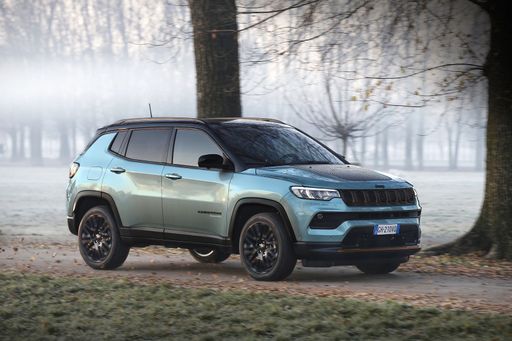 @ Jeep / Stellantis Media
@ Jeep / Stellantis Media
Jeep Compass
Costs and Consumption
View detailed analysis
Engine and Performance
View detailed analysis
Dimensions and Body
View detailed analysis
Jeep Compass
The Jeep Compass packs classic Jeep styling with a surprisingly composed demeanor, equally at home turning heads in the city or tackling a weekend dirt track. Inside it's a pragmatic, user-friendly compact SUV that prioritizes comfort and versatility — a smart pick if you want a dose of adventure without giving up everyday sense.
details @ Jeep / Stellantis Media
@ Jeep / Stellantis Media
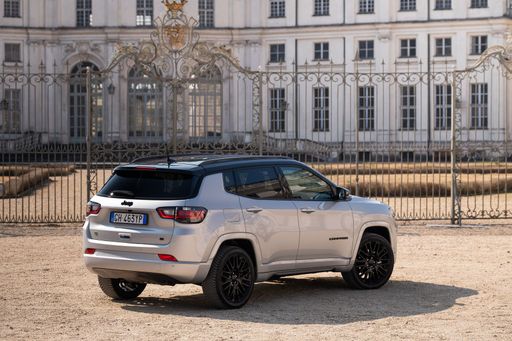 @ Jeep / Stellantis Media
@ Jeep / Stellantis Media
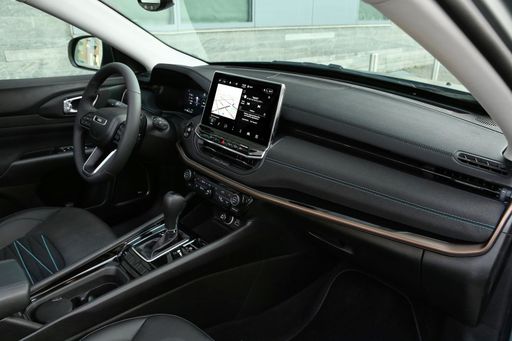 @ Jeep / Stellantis Media
@ Jeep / Stellantis Media
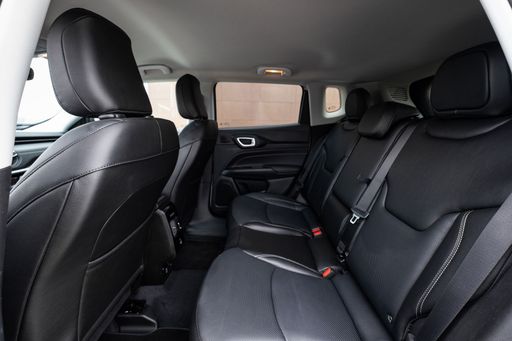 @ Jeep / Stellantis Media
@ Jeep / Stellantis Media
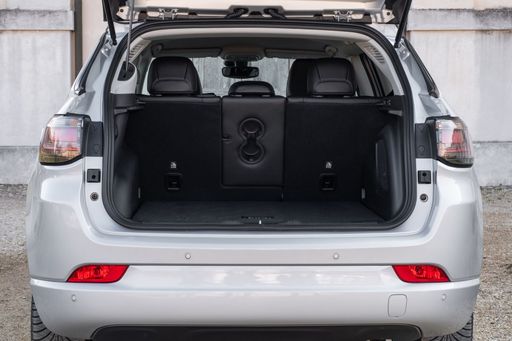 @ Jeep / Stellantis Media
@ Jeep / Stellantis Media
Kia Stonic
The Kia Stonic is a sprightly compact crossover that mixes city-friendly agility with a cheeky, modern design — perfect for buyers who want style without sacrificing sense. Inside it serves up clever practicality and a bright, well-equipped cabin, making everyday driving feel a bit more fun than it has any right to be.
details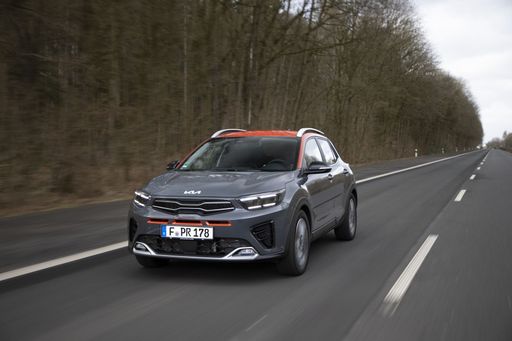 @ Kia Corporation
@ Kia Corporation
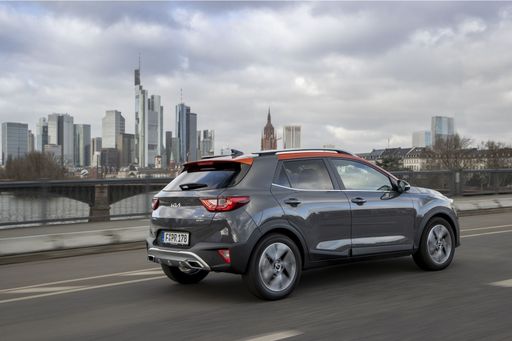 @ Kia Corporation
@ Kia Corporation
 @ Kia Corporation
@ Kia Corporation
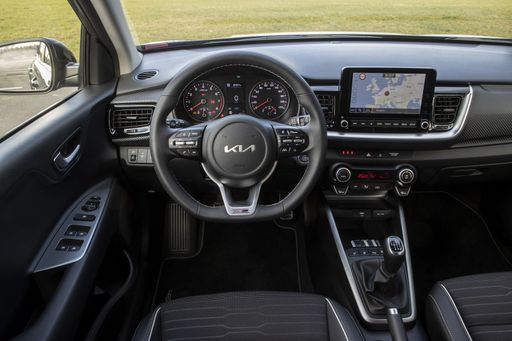 @ Kia Corporation
@ Kia Corporation
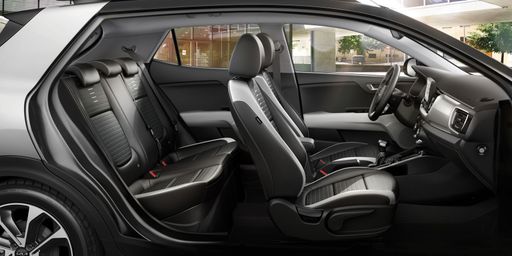 @ Kia Corporation
@ Kia Corporation
 @ Jeep / Stellantis Media
@ Jeep / Stellantis Media
|
 @ Kia Corporation
@ Kia Corporation
|
|
|
|
Costs and Consumption |
|
|---|---|
|
Price
34200 - 43200 £
|
Price
20100 - 26600 £
|
|
Consumption L/100km
5.8 - 5.9 L
|
Consumption L/100km
5.6 - 5.9 L
|
|
Consumption kWh/100km
17.50 kWh
|
Consumption kWh/100km
-
|
|
Electric Range
500 km
|
Electric Range
-
|
|
Battery Capacity
74 kWh
|
Battery Capacity
-
|
|
co2
0 - 133 g/km
|
co2
127 - 133 g/km
|
|
Fuel tank capacity
55 L
|
Fuel tank capacity
45 L
|
Dimensions and Body |
|
|---|---|
|
Body Type
SUV
|
Body Type
SUV
|
|
Seats
5
|
Seats
5
|
|
Doors
5
|
Doors
5
|
|
Curb weight
1667 - 2198 kg
|
Curb weight
1205 - 1270 kg
|
|
Trunk capacity
550 L
|
Trunk capacity
352 L
|
|
Length
4552 mm
|
Length
4165 mm
|
|
Width
1928 mm
|
Width
1760 mm
|
|
Height
1675 mm
|
Height
1520 mm
|
|
Max trunk capacity
1561 L
|
Max trunk capacity
1155 L
|
|
Payload
-
|
Payload
440 - 445 kg
|
Engine and Performance |
|
|---|---|
|
Engine Type
Petrol MHEV, Electric
|
Engine Type
Petrol, Petrol MHEV
|
|
Transmission
Automatic
|
Transmission
Manuel, Automatic
|
|
Transmission Detail
Dual-Clutch Automatic, Reduction Gearbox
|
Transmission Detail
Manual Gearbox, Dual-Clutch Automatic
|
|
Drive Type
Front-Wheel Drive
|
Drive Type
Front-Wheel Drive
|
|
Power HP
145 - 213 HP
|
Power HP
100 - 115 HP
|
|
Acceleration 0-100km/h
8.5 - 10.3 s
|
Acceleration 0-100km/h
10.7 - 12.1 s
|
|
Max Speed
180 - 188 km/h
|
Max Speed
179 - 182 km/h
|
|
Torque
230 - 345 Nm
|
Torque
172 - 200 Nm
|
|
Number of Cylinders
3 - 4
|
Number of Cylinders
3
|
|
Power kW
107 - 157 kW
|
Power kW
74 - 85 kW
|
|
Engine capacity
1199 cm3
|
Engine capacity
998 cm3
|
General |
|
|---|---|
|
Model Year
2025
|
Model Year
2025
|
|
CO2 Efficiency Class
D, A
|
CO2 Efficiency Class
D
|
|
Brand
Jeep
|
Brand
Kia
|
What drivetrain options does the Jeep Compass have?
The Jeep Compass is available as Front-Wheel Drive.
The prices and data displayed are estimates based on German list prices and may vary by country. This information is not legally binding.
